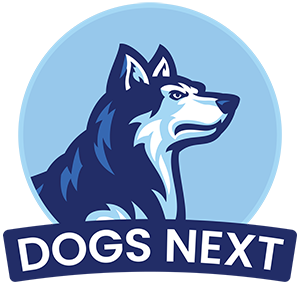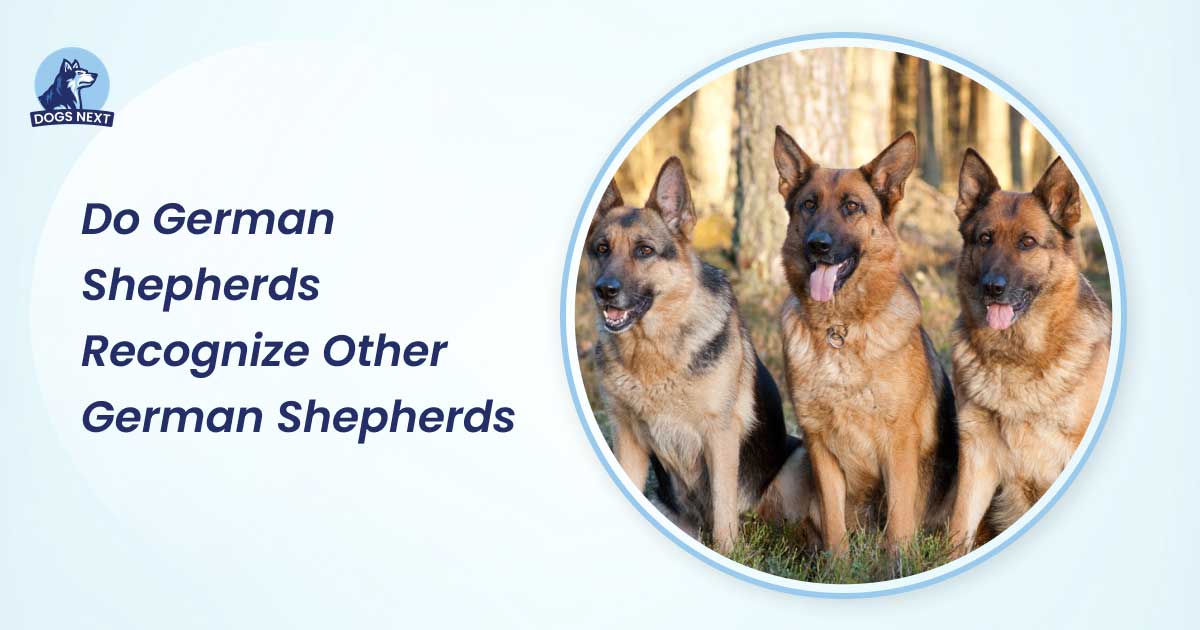Yes, German Shepherds can recognize other German Shepherds. Their sharp senses and intelligence aid this recognition.
German Shepherds are known for their loyalty and intelligence. These traits help them identify familiar faces and scents. But do they recognize other German Shepherds specifically? This question intrigues many dog owners and enthusiasts. Understanding canine social behavior can provide insights into this.
Dogs rely on various cues, such as smell, sight, and body language, to identify others. German Shepherds, with their keen senses, are no exception. They can distinguish between different breeds and even recognize their own kind. This ability showcases their unique social skills and intelligence. In this blog post, we will explore how German Shepherds recognize each other and what signs to look for.
Can Dogs Recognize Breed Similarities?
Have you ever wondered if German Shepherds can recognize other German Shepherds? The idea of dog breed recognition is fascinating. Dogs have unique ways of identifying each other, but do they actually notice breed similarities? Let’s explore how dogs perceive breeds and if German Shepherds can recognize their own kind.
Dogs Rely On Scent And Body Language
Dogs have a remarkable sense of smell. They use scent to identify many things, including other dogs. Each dog has a unique scent, much like a fingerprint. This scent allows dogs to recognize individuals, including those of the same breed.
In addition to scent, dogs use body language to communicate. They read each other’s posture, movement, and facial expressions. This helps them understand the intentions and emotions of other dogs. For German Shepherds, this form of canine identification of peers is crucial.
- Scent: Dogs have up to 300 million olfactory receptors. They can distinguish between different scents easily.
- Body Language: Dogs observe tail position, ear movement, and overall posture to gather information.
- Facial Expressions: Dogs read each other’s faces to understand mood and intent.
German Shepherds are known for their keen senses and intelligence. They can pick up subtle cues from other dogs. This ability helps them in recognizing breed similarities. When two German Shepherds meet, they might sense a familiar body structure and behavior. These signals contribute to their recognition.
Familiarity
Familiarity plays a significant role in dog breed recognition. Dogs often feel comfortable around those they know. This includes dogs of the same breed. If a German Shepherd grows up around other German Shepherds, it becomes familiar with their specific traits.
Here are some factors that contribute to this familiarity:
- Early Socialization: Puppies exposed to their own breed learn to recognize similar traits.
- Shared Experiences: Dogs that play and interact with the same breed develop a sense of kinship.
- Visual Cues: Dogs notice physical similarities, such as size and coat color.
German Shepherds often show a preference for dogs of their own breed. This is because they are used to their behavior and appearance. Familiarity with their own kind helps in social interactions. It makes them feel secure and understood.
Understanding how dogs perceive breeds can enhance our bond with them. It gives us insight into their social world and preferences. For German Shepherd owners, knowing that their pets can recognize other German Shepherds can be heartwarming. It shows the depth of canine identification of peers.
Behavioral Cues In German Shepherds
Do German Shepherds Recognize Other German Shepherds? This intriguing question often arises among dog enthusiasts. Understanding the behavioral cues in German Shepherds can provide insight into how these intelligent dogs identify and interact with their own breed. German Shepherds exhibit unique behaviors that help them recognize and bond with each other.
Shared Traits
German Shepherds display several shared traits that aid in their recognition of other German Shepherds. These traits are part of their breed-specific behaviors and can be seen in their body language and interactions.
- Posture and Movement: German Shepherds have a distinct posture and way of moving. Their confident stance and alert movements are easily recognizable to other German Shepherds.
- Vocalizations: German Shepherds use specific sounds to communicate. Their barks, whines, and other vocalizations can signal familiarity and breed-specific traits in interaction.
- Play Behavior: When playing, German Shepherds often exhibit certain behaviors like herding, chasing, and mock fighting. These actions are understood by other German Shepherds, facilitating recognition.
The table below highlights some common shared traits:
| Trait | Description |
|---|---|
| Posture | Confident, alert stance |
| Movement | Graceful, purposeful gait |
| Vocalizations | Distinct barks and whines |
| Play Behavior | Herding, chasing, mock fighting |
Tendency To Bond Faster
German Shepherds tend to bond faster with their own breed. This accelerated bonding process is due to several factors related to their behavior and instincts.
- Shared Energy Levels: German Shepherds have similar energy levels. They enjoy the same types of activities and play styles, which helps them bond quickly.
- Understanding of Cues: Shepherd bonding cues are instinctively understood by other German Shepherds. This shared understanding of signals and behaviors facilitates faster connections.
- Mutual Respect: German Shepherds respect each other’s space and boundaries. This mutual respect reduces conflicts and fosters trust.
Here are some Shepherd bonding cues that contribute to faster bonding:
- Eye Contact: German Shepherds use eye contact to communicate trust and intention.
- Body Language: Their body language is clear and precise, making interactions smooth.
- Social Play: Engaging in social play strengthens their bond and understanding.
German Shepherd behavior and behavior-based recognition in dogs play crucial roles in their interactions. Their shared traits and bonding tendencies make them more likely to recognize and connect with each other.
Environmental Influence On Recognition
German Shepherds, like many dog breeds, have the ability to recognize other dogs of the same breed. This recognition is influenced by several factors, including environmental influences. Understanding how these factors affect recognition can help owners foster better relationships between their German Shepherds.
Dogs Raised Together May Recognize Pack Members
When German Shepherds are raised together, they develop strong bonds. These bonds can help them recognize each other as part of the same pack. This recognition is often based on a combination of social cues in dogs and shared experiences.
Here are some key points to consider:
- Shared Environment: Dogs raised in the same environment share common smells, sounds, and routines. These environmental factors in dog recognition play a crucial role.
- Pack Behavior: German Shepherds in the same pack exhibit specific behaviors, such as grooming each other, playing together, and sleeping in proximity. These behaviors strengthen their bond.
- Visual and Olfactory Cues: Dogs identifying companions rely on both sight and smell. Familiarity with each other’s scent and appearance aids in recognition.
In a study of dog behavior, researchers found that dogs raised together had a higher likelihood of recognizing each other. This recognition can persist even after long periods of separation.
| Environmental Factor | Influence on Recognition |
|---|---|
| Shared Smells | Enhances recognition through familiar scents |
| Common Sounds | Builds associative memory linked to pack members |
| Routine Activities | Strengthens bonds through shared experiences |
Socialization
Socialization and recognition go hand in hand. Exposing German Shepherds to a variety of social situations helps them develop the skills needed to recognize other dogs, including their breed.
Key aspects of socialization include:
- Early Exposure: Introducing puppies to other dogs, especially German Shepherds, at a young age helps them learn to recognize and interact appropriately.
- Positive Interactions: Encouraging friendly and positive interactions between dogs helps build trust and familiarity.
- Training Sessions: Regular training sessions that involve multiple dogs can enhance their ability to recognize each other through shared learning experiences.
Socialization also involves teaching dogs to read social cues in dogs. These cues include body language, facial expressions, and vocalizations.
Research shows that well-socialized German Shepherds are more adept at recognizing other dogs. This skill is crucial in preventing conflicts and promoting harmonious relationships.
In summary, environmental influence and socialization are key factors in helping German Shepherds recognize each other. By understanding these aspects, owners can create a supportive environment for their dogs.
Frequently Asked Questions
Do German Shepherds Recognize Their Breed?
Yes, German Shepherds can recognize their breed. They rely on visual and olfactory cues to identify other German Shepherds.
Can German Shepherds Identify Family Members?
German Shepherds can identify family members. They use their strong sense of smell and memory to recognize familiar individuals.
How Do German Shepherds Communicate?
German Shepherds communicate through body language, vocalizations, and scents. They use these methods to interact with other dogs and humans.
Are German Shepherds Social With Other Dogs?
German Shepherds are generally social with other dogs. Proper training and socialization can enhance their interactions and behavior.
Conclusion
German Shepherds indeed recognize other German Shepherds. Their keen senses help them. They use sight, smell, and behavior cues. This recognition strengthens their social bonds. It also enhances their interactions. Owners can observe these behaviors daily. Understanding this can improve training and socialization.
Enjoy these smart, loyal dogs. They truly are remarkable companions.

I’m David, an expert contributor and writer, with two furry friends of my own, I know the challenges of raising and caring for dogs. From training to nutrition and health, my goal is to provide valuable insights and advice to help create strong bonds and happy, healthy lives. Find me in Twitter.




